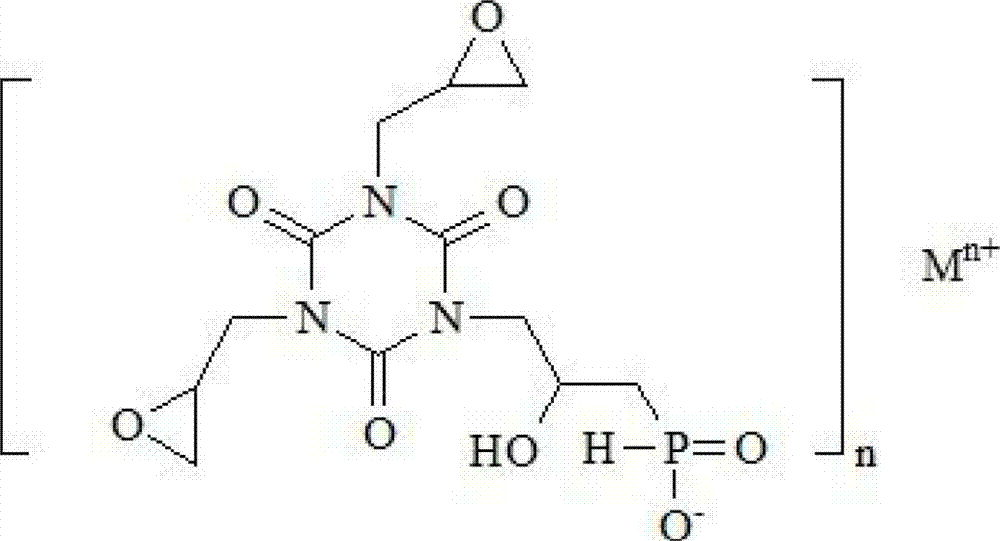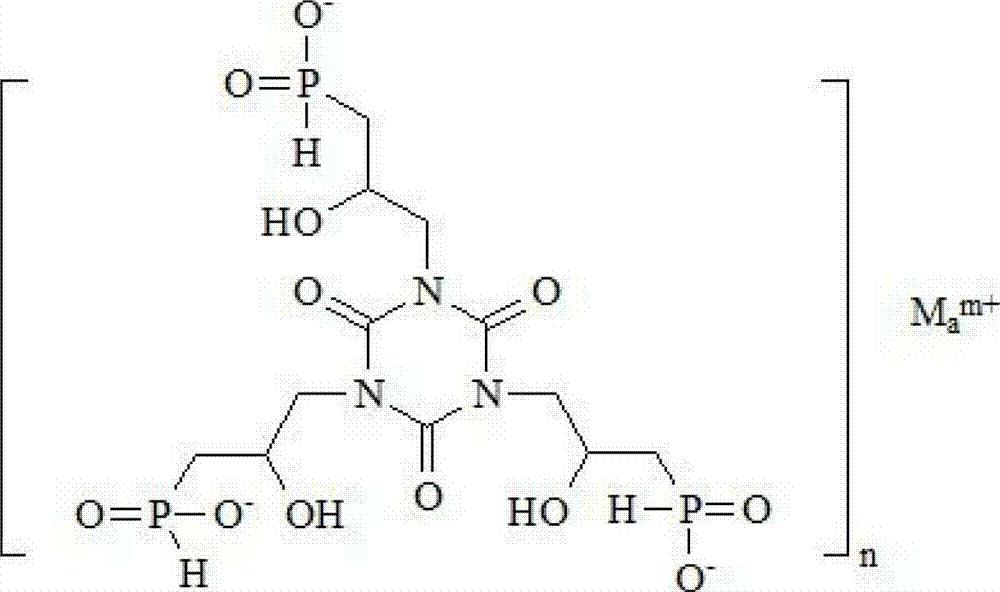Halogen-free flame retardant and preparation method thereof
A technology of flame retardant and hypophosphite, which is applied in the field of halogen-free flame retardants and its preparation, can solve the problems of high addition of halogen-free flame retardants, waste of raw materials, spontaneous combustion of red phosphorus, etc., and achieves obvious effects and flame retardant The effect is good and the steps are simple
- Summary
- Abstract
- Description
- Claims
- Application Information
AI Technical Summary
Problems solved by technology
Method used
Image
Examples
Embodiment 1
[0035] Put TGIC (triglycidyl isocyanurate) and magnesium hypophosphite with an equivalent ratio of 1:1 into the reaction vessel, use ethanol as the solvent, slowly heat to 70℃, heat and stir to reflux for 10 hours, cool and filter, wash with water, and dry to obtain the target Compound I.
Embodiment 2
[0037] Put TGIC (triglycidyl isocyanurate) and sodium hypophosphite with an equivalent ratio of 1:2 into the reaction vessel, use ethylene glycol as the solvent, slowly heat to 150°C, stir and reflux for 4 hours, cool, filter, and wash with water. After drying, the target compound II is obtained.
Embodiment 3
[0039] Put TGIC (triglycidyl isocyanurate) and potassium hypophosphite with an equivalent ratio of 1:3.5 into the reaction vessel, use ethanol as the solvent, slowly heat to 100°C, heat and stir to reflux for 6 hours, cool and filter, wash with water, and dry to obtain the target Compound III.
PUM
 Login to View More
Login to View More Abstract
Description
Claims
Application Information
 Login to View More
Login to View More - R&D
- Intellectual Property
- Life Sciences
- Materials
- Tech Scout
- Unparalleled Data Quality
- Higher Quality Content
- 60% Fewer Hallucinations
Browse by: Latest US Patents, China's latest patents, Technical Efficacy Thesaurus, Application Domain, Technology Topic, Popular Technical Reports.
© 2025 PatSnap. All rights reserved.Legal|Privacy policy|Modern Slavery Act Transparency Statement|Sitemap|About US| Contact US: help@patsnap.com



